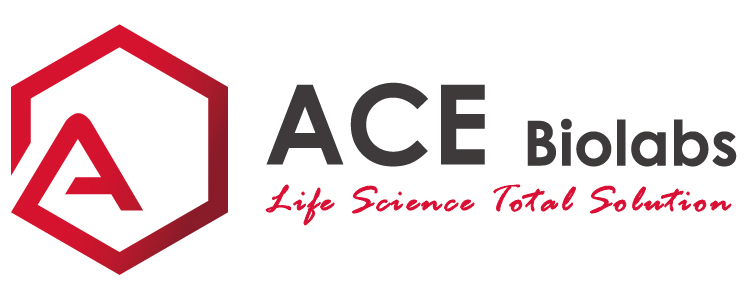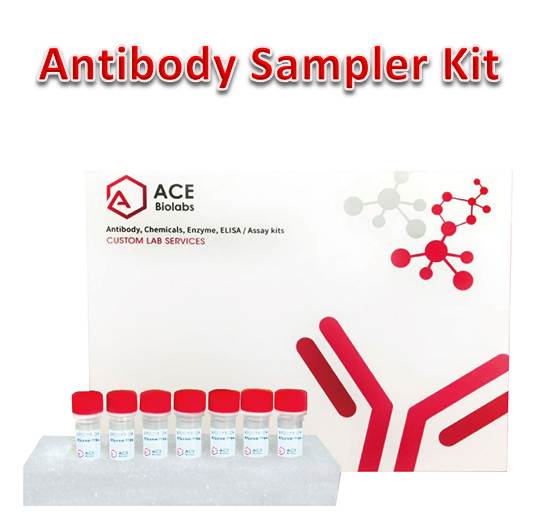Antibody, Antibody Sampler Kit
Jak/Stat Pathway Inhibitors Antibody Sampler Kit
- Catalog Number : AK0182
- Number :
-
Size:
Qty : - Price : Request Inquiry
Introduction
Jak (Janus Kinase) and Stat (signal transducer and activator of transcription) proteins are utilized by receptors for a wide varity of ligands including cytokines, hormones, growth factors, and neurotransmitters. Jaks and Stats play important roles in oncogenesis, tumor progression, angiogenesis, cell motility, immune responses, and stem cell differentiation. Therefore, regulation of Jak/Stat signaling is crucial to prevent aberrant signaling which can lead to disease progression. Two methods for regulating Jak/Stat signaling involve SOCS and PIAS proteins. The SOCS (suppressor or cytokine signaling) family members are negative regulators of cytokine signal transduction that inhibit the Jak/Stat pathway and consist of 8 known members, including the originally identified protein CIS1 (cytokine-inducible SH2-containing protein) and SOCS1-SOCS7. Each SOCS family member contains a central SH2 domain and a conserved carboxy-terminal motif designated as the SOCS box. These proteins are important regulators of cytokine signaling, proliferation, differentiation, and immune responses. SOCS proteins are involved in regulating over 30 cytokines, including interleukins, growth hormone (GH), interferons, leptin, and leukemia inhibitory factor. SOCS1, also known as JAB (Janus Kinase binding protein) and SSI-1 (Stat-induced Stat inhibitor-1), shares the most homology with SOCS3 and both are highly induced by cytokines. Both SOCS1 and SOCS3 directly inhibit Jak activity; SOCS1 inhibits Jak through an interaction involving a phospohotyrosine located in the kinase activation loop; SOCS3 inhibits Jak via its SH2 domain. In addition to inhibiting Jak/Stat signaling, the SOCS box of SOCS1 and SOCS3 can trigger ubiquitin-mediated degradation of proteins within and outside the Jak/Stat pathway. SOCS2 is also incduced upon cytokine stimulation and the activity of SOCS2 has been predominately linked to GH and insulin-like growth factor signaling by binding to tyrosine-phosphorylated receptors via its SH2 domain. The PIAS (protein inhibit
General Information
| Reactivity | Human, Mouse, Rabbit |
|---|---|
| Application | WB, ELISA |
| Host | Rabbit |
| Storage instruction | Store at -20℃. Avoid freeze / thaw cycles. |
| Research topic | Inhibitors of Jak/Stat signaling pathway; oncogenesis; immune responses; stem cell differentiation |
PRODUCT INCLUDES
|
Cat No. |
Product name |
Quantity |
Applications |
Reactivity |
Host |
|
A340121 |
SOCS1 Polyclonal Antibody |
20μL |
WB, ELISA |
Human, Mouse, Rat |
Rabbit |
|
A340677 |
SOCS2 Polyclonal Antibody |
20μL |
WB, ELISA |
Human, Mouse, Rat |
Rabbit |
|
A340106 |
SOCS3 Polyclonal Antibody |
20μL |
WB, IHC, ELISA |
Human, Mouse, Rat |
Rabbit |
|
A340638 |
PIAS1 Polyclonal Antibody |
20μL |
WB, IHC, ELISA |
Human, Mouse |
Rabbit |
|
A340639 |
PIAS3 Polyclonal Antibody |
20μL |
WB, IHC, ELISA |
Human, Mouse, Rat |
Rabbit |
|
A1013s |
Goat Anti-Rabbit IgG (H+L) (peroxidase/HRP conjugated) |
120μL |
WB, ELISA |
Rabbit |
Goat |







.png)